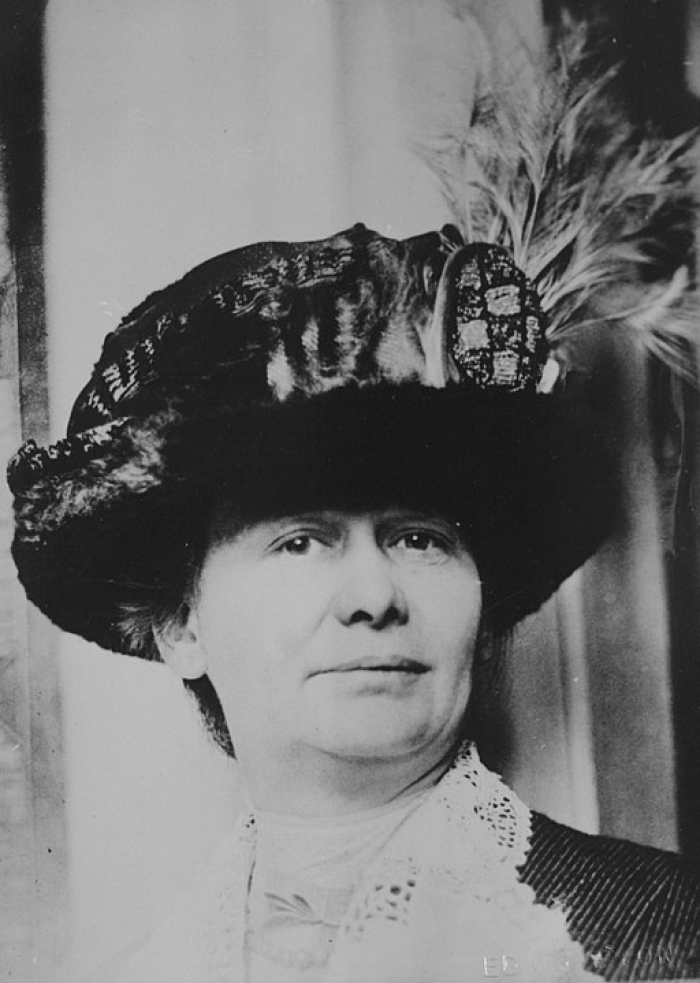Numerous states and U.S. territories enacted criminal syndicalism laws in the late 1910s and early 1920s with the purpose of making it illegal for individuals or groups to advocate radical political and economic changes by criminal or violent means.
These laws were in direct opposition to the ideas and intentions of individual freedoms established by the founders in the First Amendment.
Thousands of Americans arrested for opposing government views in 1910s, 1920s
Criminal syndicalism laws were created in response to the social changes taking place during the early part of the twentieth century in the United States and in other countries, along with the conflicts that led to World War I. At the time, government perceived challenges to American democracy coming from various fronts, including the growth of trade unions, increases in the numbers of immigrants from abroad, and the global rise of communism and fascism.
During the 1910s and 1920s, authorities arrested thousands of people for advocating views and opinions that differed from or opposed those of the government. In many cases, despite the fact that these views and opinions took the form of peaceful protests and organized meetings, hundreds were tried, convicted, and sent to prison under the criminal syndicalism laws of more than 20 states and territories.
Laws aimed at undermining labor movement, communist ideas
Many of the laws were enacted to undermine the Industrial Workers of the World (IWW), which emerged in the United States in the early twentieth century as a labor movement promoting industrial unionism and social equality by peaceful means. Amid a shared feeling that the prosecution of radical elements within society was necessary, appellate courts at the state level and federal courts generally upheld criminal syndicalism laws, even at the expense of individual rights.
Many of the cases tried in the courts defied even moderate notions of civil liberty and procedural fairness, and the IWW and other organizations considered radical were subject to persecution with the creation of illiberal and reactionary legislation.
Court justified speech restrictions
The Supreme Court upheld convictions for violations of criminal syndicalism laws in four important cases:
- Schenck v. United States (1919)
- Abrams v. United States (1919)
- Gitlow v. New York (1925)
- Whitney v. California (1927)
In each of these cases, the defendants’ views and opinions challenged generally held public ones, and the courts found sufficient basis to uphold restrictive interpretations of First Amendment rights. Such interpretation enabled states to enact criminal syndicalism laws overriding First Amendment rights.
For example, in Whitney v. California, Charlotte Anita Whitney was convicted under California’s 1919 Criminal Syndicalism Act for helping to organize the Communist Labor Party of California. Whitney claimed that it was not her intention or that of the other organizers for the party to become an instrument of violence.
Court evoked ‘clear and present danger’ test
In this case, the Supreme Court’s decision, delivered by Justice Edward T. Sanford for the majority, invoked Justice Oliver Wendell Holmes Jr.’s clear and present danger test. Of more significance, Sanford argued that the state should have the power to punish those who abuse their rights to speech by disturbing the public peace, inciting crime, or endangering the public or by threatening to overthrow or endanger the government.
The intention of Justice Sanford’s conclusions was that opinions and words that have the ability — not necessarily the intention — to incite disturbances and endanger government should be punished.
First Amendment rights reasserted in late 1920s
In the late 1920s, a counterreaction to this period of suppression of free speech sparked the development of new laws and the reassertion of First Amendment rights.
Despite this shift in perspective, cases involving violations of criminal syndicalism laws still reached the Supreme Court. In Brandenburg v. Ohio (1969), the Court held that Ohio’s criminal syndicalism statute violated the right of Clarence Brandenburg to free speech.
Brandenburg, a Ku Klux Klan leader, had been charged with and convicted of advocating violence. In overruling the appellate court, the Supreme Court deemed that Ohio’s law made the advocacy of doctrines illegal, without determining whether advocacy would likely lead to imminent lawless action. The Court decided that the failure to make a clear distinction rendered the law overly broad and in violation of the Constitution.
This article was originally published in 2009. Dale Mineshima-Lowe is Managing Editor for the Center of International Relations, researcher and Associate Lecturer in both the Department of Politics and Department of Geography at Birkbeck, University of London, and Tutor of Politics and History at the City Lit, adult education college in Central London.

